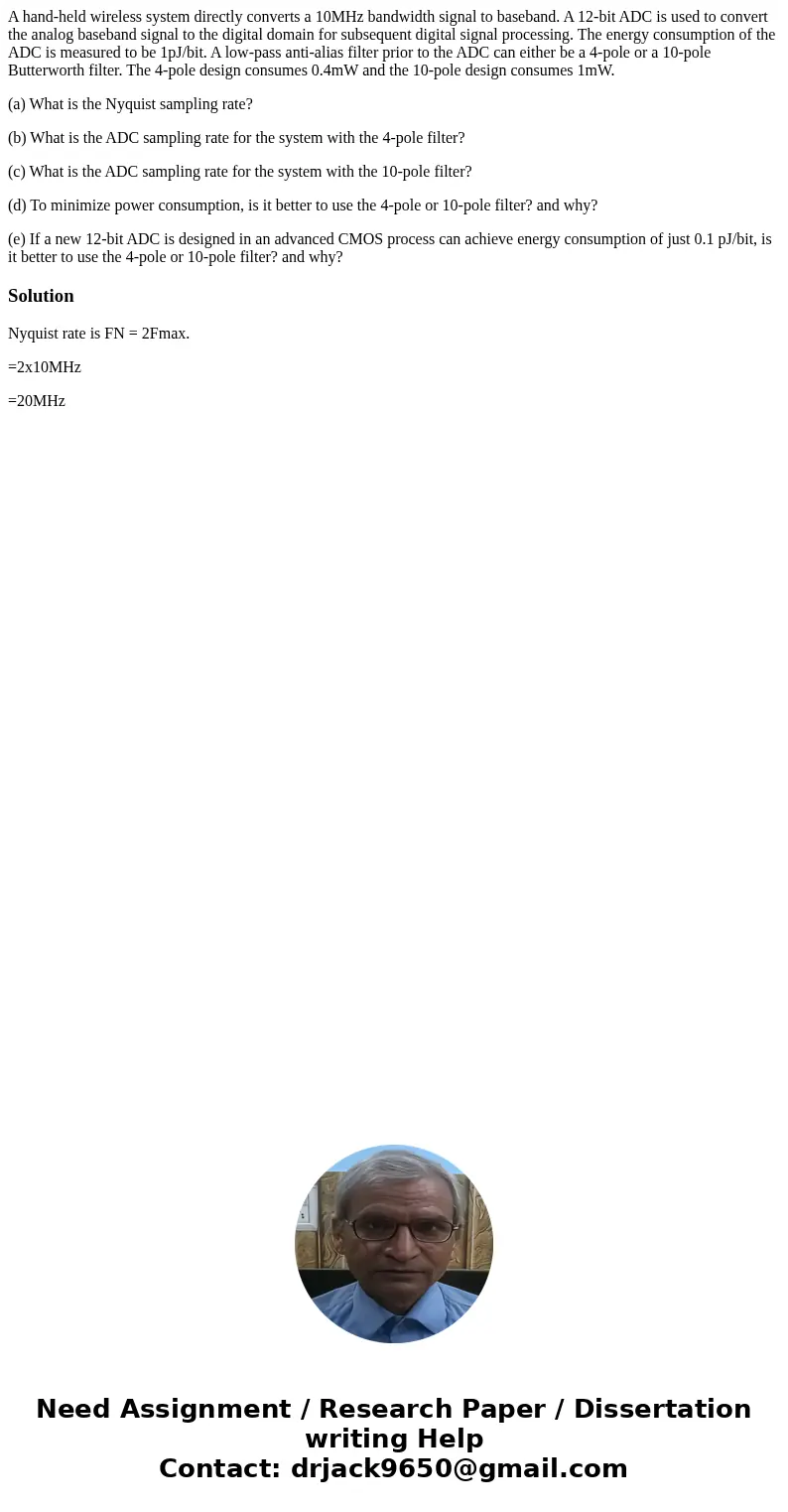A handheld wireless system directly converts a 10MHz bandwid
A hand-held wireless system directly converts a 10MHz bandwidth signal to baseband. A 12-bit ADC is used to convert the analog baseband signal to the digital domain for subsequent digital signal processing. The energy consumption of the ADC is measured to be 1pJ/bit. A low-pass anti-alias filter prior to the ADC can either be a 4-pole or a 10-pole Butterworth filter. The 4-pole design consumes 0.4mW and the 10-pole design consumes 1mW.
(a) What is the Nyquist sampling rate?
(b) What is the ADC sampling rate for the system with the 4-pole filter?
(c) What is the ADC sampling rate for the system with the 10-pole filter?
(d) To minimize power consumption, is it better to use the 4-pole or 10-pole filter? and why?
(e) If a new 12-bit ADC is designed in an advanced CMOS process can achieve energy consumption of just 0.1 pJ/bit, is it better to use the 4-pole or 10-pole filter? and why?
Solution
Nyquist rate is FN = 2Fmax.
=2x10MHz
=20MHz

 Homework Sourse
Homework Sourse